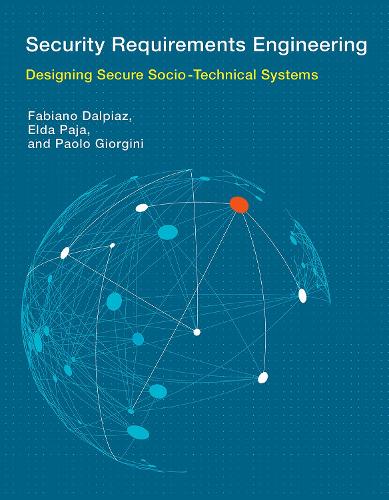
Security Requirements Engineering: Designing Secure Socio-Technical Systems
(Hardback)
Publishing Details
Security Requirements Engineering: Designing Secure Socio-Technical Systems
By (Author) Fabiano Dalpiaz
By (author) Elda Paja
By (author) Paolo Giorgini
MIT Press Ltd
MIT Press
22nd January 2016
United States
Classifications
Tertiary Education
Non Fiction
Software Engineering
005.8
Physical Properties
Hardback
224
Width 178mm, Height 229mm, Spine 11mm
Description
A novel, model-driven approach to security requirements engineering that focuses on socio-technical systems rather than merely technical systems.Security requirements engineering is especially challenging because designers must consider not just the software under design but also interactions among people, organizations, hardware, and software. Taking this broader perspective means designing a secure socio-technical system rather than a merely technical system. This book presents a novel, model-driven approach to designing secure socio-technical systems. It introduces the Socio-Technical Modeling Language (STS-ML) and presents a freely available software tool, STS-Tool, that supports this design approach through graphical modeling, automated reasoning capabilities to verify the models constructed, and the automatic derivation of security requirements documents. After an introduction to security requirements engineering and an overview of computer and information security, the book presents the STS-ML modeling language, introducing the modeling concepts used, explaining how to use STS-ML within the STS method for security requirements, and providing guidelines for the creation of models. The book then puts the STS approach into practice, introducing the STS-Tool and presenting two case studies from industry- an online collaborative platform and an e-Government system. Finally, the book considers other methods that can be used in conjunction with the STS method or that constitute an alternative to it. The book is suitable for course use or as a reference for practitioners. Exercises, review questions, and problems appear at the end of each chapter.
Author Bio
Fabiano Dalpiaz is Assistant Professor in the Department of Information and Computing Sciences at Utrecht University, the Netherlands. Elda Paja is a Postdoctoral Research Fellow in the Department of Engineering and Computer Science at the University of Trento, Italy. Paolo Giorgini is Associate Professor in the Department of Engineering and Computer Science at the University of Trento.
